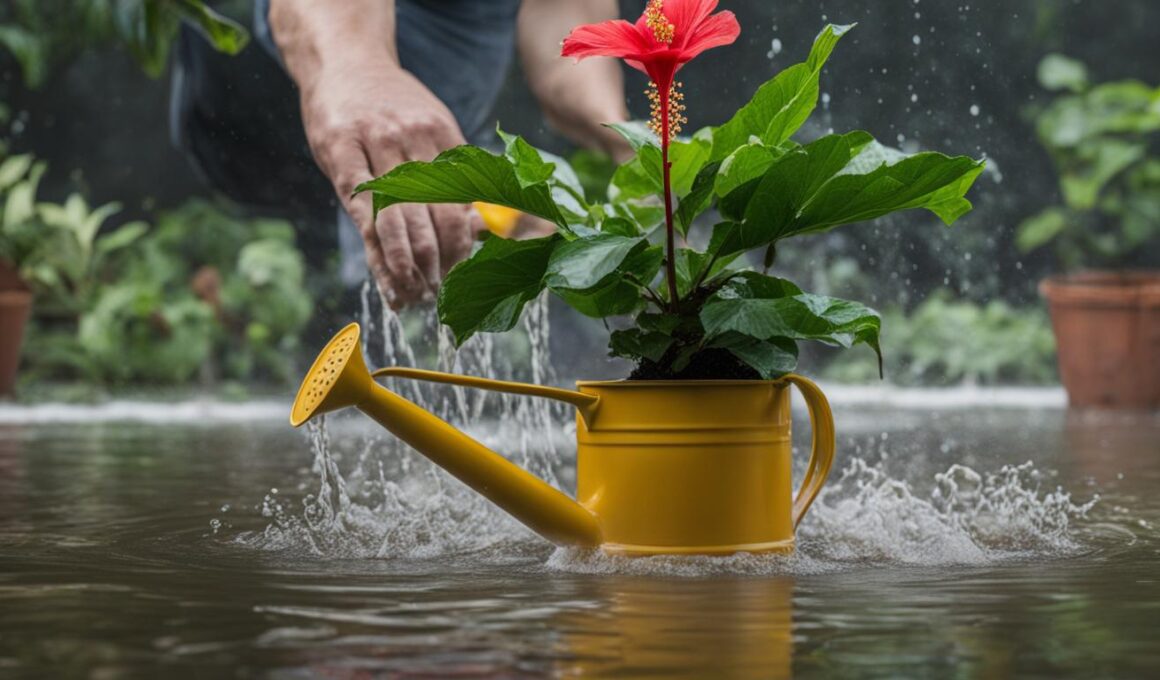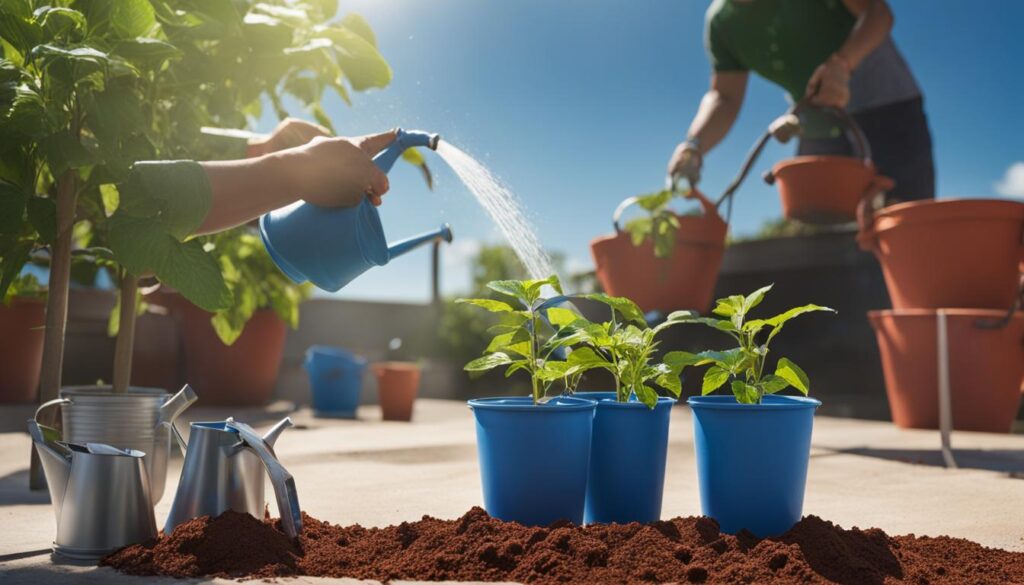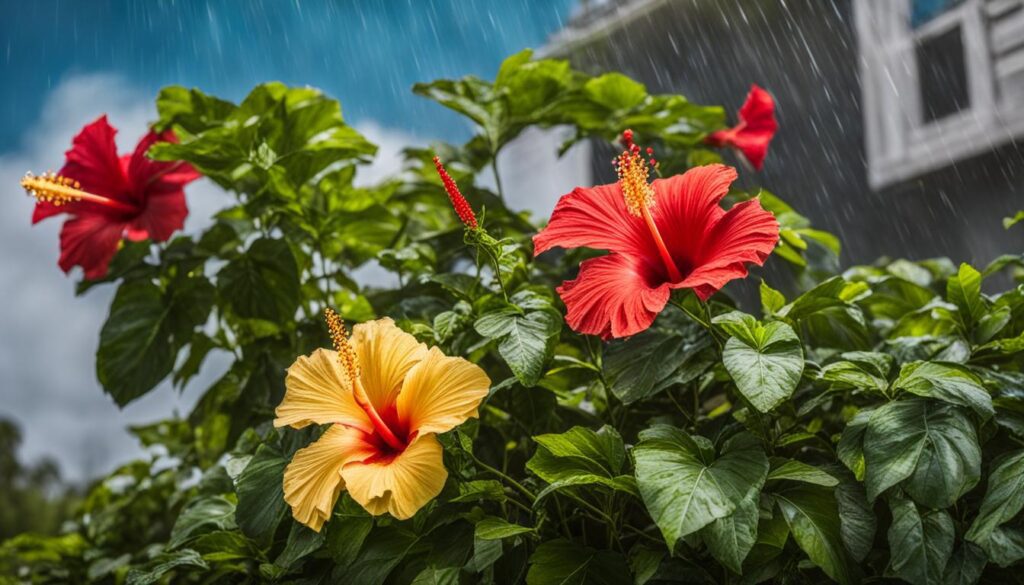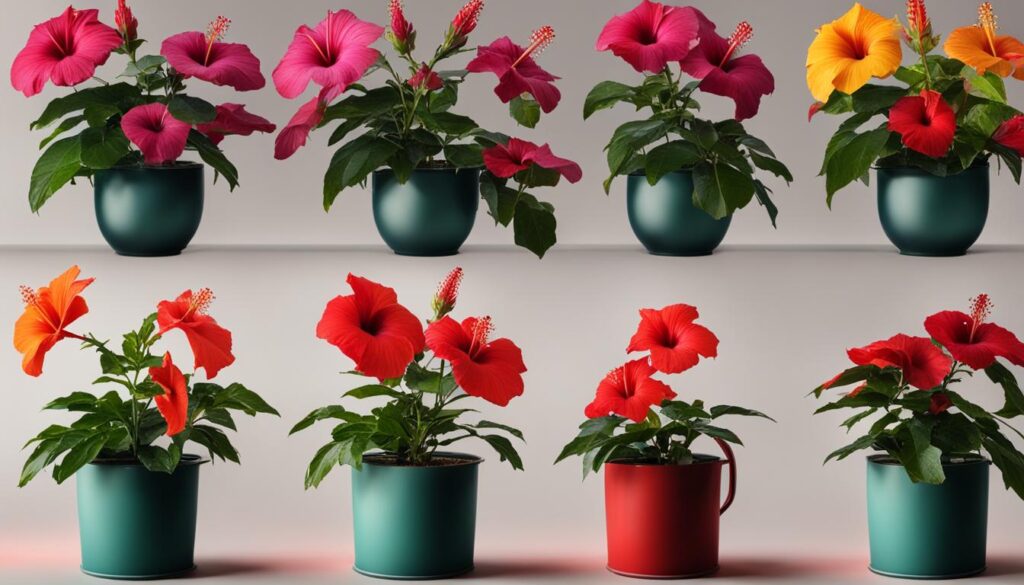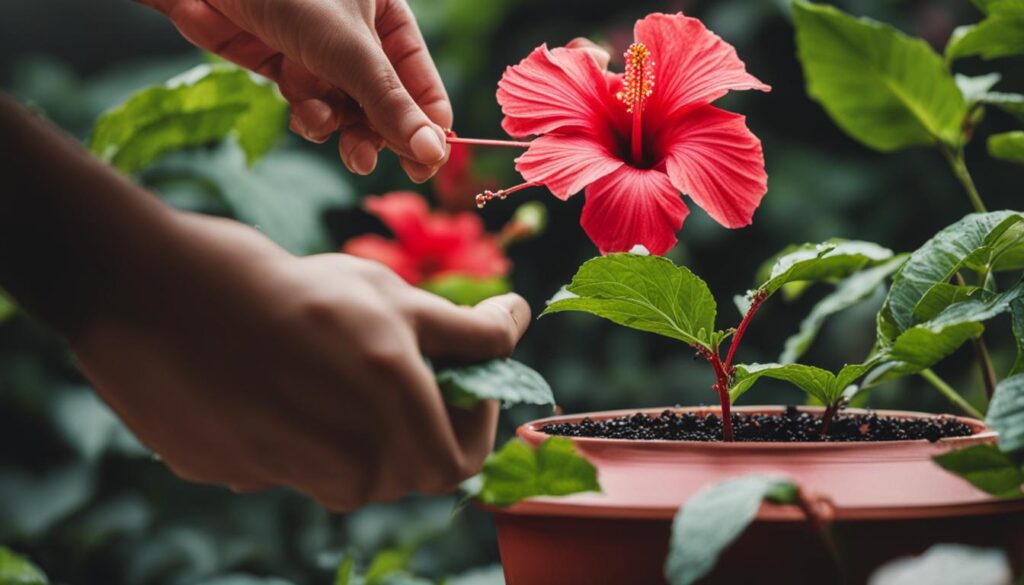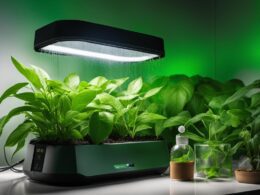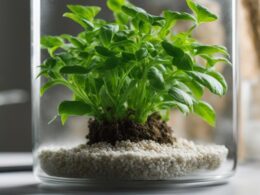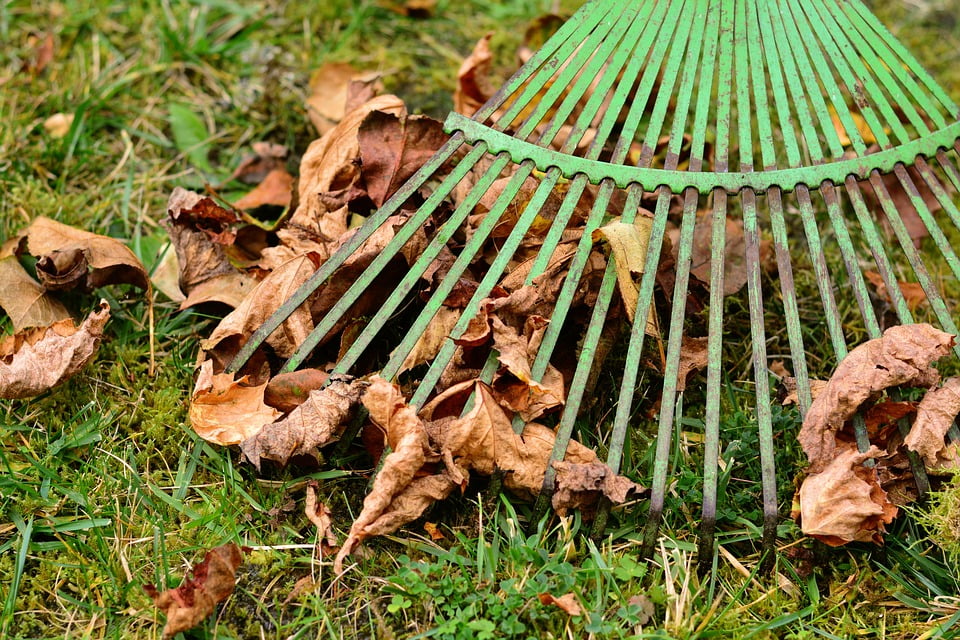Hibiscus plants are a stunning addition to any garden, with their vibrant blooms and lush foliage. To ensure that your hibiscus thrives and continues to dazzle, understanding its water requirements is crucial. Proper watering habits will help you maintain healthy growth and maximize blooming potential.
In this article, we will provide you with valuable guidance on how much water your hibiscus needs, along with essential tips to keep your plants hydrated and flourishing. Whether you’re a seasoned gardener or a novice, these insights will help you create the perfect watering routine for your hibiscus.
Post Summary
- Understanding the water requirements of hibiscus is crucial for their optimal growth.
- Hibiscus plants are considered water-loving and require regular watering, especially during warm weather.
- Watering frequency should be adjusted based on weather conditions and the plant’s growth stage.
- Proper drainage and soil saturation are essential for hibiscus health.
- Fertigation, combining watering and fertilizing, can provide a steady nutrient supply for vibrant blooms.
Understanding the Watering Needs of Hibiscus
Hibiscus plants, known for their vibrant blooms, are water-loving plants that require regular watering to thrive. To ensure healthy growth, it is important to understand the watering needs of hibiscus and implement effective watering strategies. Here are some hibiscus watering tips to help you keep your plants happy and hydrated:
- Water frequency: Hibiscus plants enjoy moist soil, especially during warm and hot weather. In most locations, this means watering them daily, unless there is sufficient rainfall. Regular watering will prevent the soil from drying out and ensure that the plant’s roots have access to the necessary moisture.
- Water quantity: When watering hibiscus, it is essential to thoroughly wet the soil around the roots. This ensures that the water reaches the entire root system and promotes healthy growth. Monitor the soil’s moisture level to determine if you are applying enough water. If the soil feels dry below the surface, increase the amount of water you provide.
- Monitor foliage: The appearance of your hibiscus plant’s foliage can also indicate if it is receiving enough water. Healthy hibiscus leaves are typically bright green and turgid. If you notice wilting or yellowing leaves, it is a sign that the plant needs more water. Adjust your watering accordingly to prevent dehydration and maintain the plant’s vitality.
Remember to consider the quality of water you use for watering hibiscus. Tap water with slightly acidic pH levels and low mineral content is ideal. If your tap water is not suitable, you can use rainwater or filtered water. By understanding the watering needs of hibiscus and implementing appropriate watering strategies, you can ensure the optimal growth and blooming of your beautiful hibiscus plants.
Interesting Fact:
Hibiscus plants have large leaves and moisture-filled blooms, which contribute to their classification as water-loving plants. They have adapted to humid conditions and frequent rainfall in their native tropical areas. By replicating these natural conditions through proper and regular watering, you can help your hibiscus thrive in any region.
Watering According to Weather Conditions
Adjusting the watering frequency of your hibiscus plants according to weather conditions is crucial to ensure their healthy growth. Whether you are experiencing hot, dry weather or rainy conditions, your watering habits should adapt accordingly.
In hot weather, when the sun is shining and the winds are strong, the soil around your hibiscus plants can dry out quickly. This means you may need to water them more frequently to keep the soil moist. On the other hand, during cool and rainy conditions, the moisture in the soil can be retained for a longer period. In these situations, you may not need to water your hibiscus plants as often.
Remember, flexibility is key when it comes to watering your hibiscus plants. Pay attention to the weather forecast and adjust your watering schedule accordingly. By doing so, you can ensure that your plants receive the appropriate amount of water for their optimal growth.
Watering Frequency Guide:
| Weather Conditions | Watering Frequency |
|---|---|
| Hot, dry weather | Water daily or every other day, depending on soil moisture |
| Rainy or cool weather | Water less frequently, approximately 2-3 times per week, depending on soil moisture |
| Drought or extended periods without rain | Water deeply at least once a week, ensuring soil is thoroughly saturated |
By following this watering frequency guide and adjusting it according to the weather conditions, you can provide your hibiscus plants with the optimal moisture they need for healthy growth. Remember to always monitor the soil moisture and the appearance of your plants to ensure they are getting the right amount of water.
Watering Techniques for Hibiscus Plants
Proper watering techniques are crucial for the healthy growth of hibiscus plants. Understanding how to determine the amount of water to apply and ensuring the soil is adequately saturated are key factors in maintaining optimal soil moisture levels and promoting vibrant blooms. Here are some effective watering tips to help you care for your hibiscus plants:
1. Assessing Soil Saturation
To determine if the soil is adequately saturated after watering, carefully observe the water absorption rate. For potted hibiscus plants, gently tip the pot to check if excess water flows out. If the water drains easily, it signifies that the soil is well-drained and the plant has received enough water. In-ground hibiscus plants can benefit from creating a shallow well around the base, allowing the water to seep evenly throughout the root ball. This method helps to prevent water runoff and ensures that the roots receive proper hydration.
2. Choosing the Right Potting Mix
Using a well-drained potting mix is essential for hibiscus plants. The potting mix should contain a combination of peat moss, perlite, and vermiculite to promote proper drainage, preventing waterlogged roots. Avoid using heavy garden soil, as it tends to retain excess moisture and can lead to root rot. A well-drained potting mix allows water to flow freely through the soil, ensuring that the roots receive adequate moisture without becoming waterlogged.
3. Watering Frequency
The frequency of watering hibiscus plants depends on several factors, including the weather conditions, plant size, and pot size (if potted). As a general guideline, hibiscus plants require watering when the top inch of soil feels dry to the touch. During hot weather, hibiscus may require watering once or twice a day to prevent the soil from drying out completely. However, be cautious not to overwater, as excessive moisture can lead to root rot. Adjust the watering schedule accordingly, keeping in mind that it is better to slightly underwater than overwater.
4. Monitoring Soil Moisture Levels
Frequent monitoring of the soil moisture levels is essential to ensure that hibiscus plants receive an adequate water supply. To determine if watering is required, insert your finger or a small trowel about two inches into the soil. If the soil feels moist, wait a day or two before watering again. However, if the soil feels dry, it is time to water the plant. By regularly checking the soil moisture levels, you can prevent both underwatering and overwatering, providing the optimal amount of water for your hibiscus plants.
By implementing these watering techniques, you can ensure that your hibiscus plants receive the right amount of water for optimal growth and blooming. Remember to consider the specific needs of each individual plant and adjust your watering routine accordingly. Providing the right balance of moisture will contribute to vibrant, healthy hibiscus plants that will bring beauty to your garden.
Fertigation – Combining Watering and Fertilizing
Fertigation is a fertilizing technique that allows for the simultaneous application of water and nutrients to hibiscus plants. By combining these two essential elements, fertigation provides a steady nutrient supply, ensuring maximized growth and blooming. This method is highly effective as it allows hibiscus plants to receive a continuous infusion of essential nutrients, avoiding the feast and famine cycles associated with traditional fertilizing methods.
Implementing fertigation is relatively simple. One way to fertigate is to mix fertilizer directly into the water used for regular watering. This can be done using a watering can, hose attachment, or a drip system with a fertilizer injector. By diluting the fertilizer in water, the nutrients can be evenly distributed to the roots of the hibiscus plants, providing a balanced and consistent supply. This process can be repeated with each watering session, ensuring a regular nutrient intake for the plants.
The benefits of fertigation extend beyond just nutrient supply. By combining watering and fertilizing, the plants’ root systems become more efficient at absorbing water and nutrients from the soil. This can result in healthier and more vigorous growth, as well as an increased resistance to stress and disease. Fertigation also minimizes the risk of over or under fertilization, as the nutrients are delivered in controlled amounts with each watering session.
The advantages of fertigation include:
- Consistent and steady nutrient supply for hibiscus plants
- Maximized growth and blooming potential
- Improved nutrient absorption and root system efficiency
- Reduced risk of over or under fertilization
- Improved plant health and resistance to stress and disease
By incorporating fertigation into your hibiscus care routine, you can ensure that your plants receive the necessary nutrients for optimal growth and blooming. This technique provides a convenient and efficient way to maintain the health and beauty of your hibiscus plants throughout the growing season.
Choosing and Planting Hibiscus
When it comes to selecting hibiscus plants for your garden, there are a few key considerations to keep in mind. Different varieties of hibiscus have different growth habits and requirements, so it’s important to choose the right type for your specific growing conditions.
If you are planting hibiscus in containers, tropical hibiscus varieties are ideal. These plants thrive in full sun and can be moved indoors during colder months in regions with freezing temperatures. If you plan to plant hibiscus in the ground, consider perennial hibiscus varieties, which are more cold-hardy and can survive in a wider range of climates.
Before planting your hibiscus, prepare the soil by loosening it with a garden fork or shovel. Hibiscus plants prefer well-drained soil, so if your soil is heavy or clay-like, consider adding organic matter or sand to improve drainage. When planting, make sure to set the hibiscus at the appropriate depth – the top of the root ball should be level with or slightly above the soil surface.
| Aspect | Soil | Water |
|---|---|---|
| Full Sun | Well-drained | Regular watering |
| Partial Shade | Moist, rich | Regular watering |
Planting Instructions
- Choose a location with the appropriate amount of sunlight for your hibiscus variety.
- Prepare the soil by loosening it and improving drainage if necessary.
- Dig a hole that is slightly larger than the root ball of your hibiscus plant.
- Place the hibiscus in the hole, ensuring that it is at the appropriate depth.
- Backfill the hole with soil, gently firming it around the plant.
- Water the newly planted hibiscus thoroughly.
- Apply a layer of mulch around the base of the plant to help retain moisture and suppress weeds.
Choosing the right hibiscus variety and planting it correctly are essential for the plant’s long-term health and success. By considering the specific growing conditions in your garden and following proper planting instructions, you can ensure that your hibiscus will thrive and provide you with beautiful blooms.
Growing and Caring for Hibiscus
Proper care and maintenance are vital for the healthy growth of hibiscus plants. This section will provide you with valuable insights into the water requirements, feeding tips, and pruning techniques that will help you keep your hibiscus plants thriving.
Water Requirements
Hibiscus plants require consistent watering to ensure the soil remains moist. The frequency of watering may vary depending on the weather conditions and the growth stage of the plant. During hot and dry weather, hibiscus plants may need to be watered daily to prevent the soil from drying out. Conversely, during cooler or rainy periods, you can reduce the frequency of watering to prevent overwatering.
It is essential to monitor the moisture levels in the soil to determine if your hibiscus plants require watering. Insert your finger into the soil about an inch deep. If it feels dry, it’s time to water. However, if it still feels moist, you can hold off on watering for a little longer. Remember, consistency is key when it comes to watering hibiscus plants.
Feeding Tips
In addition to regular watering, proper feeding is crucial for the overall health and vigor of hibiscus plants. You can use a slow-release shrub and tree fertilizer specifically formulated for hibiscus plants. Follow the manufacturer’s instructions on the packaging for the correct dosage and application method.
Feeding your hibiscus plants with a balanced fertilizer will provide them with the essential nutrients they need to flourish. Nitrogen, phosphorus, and potassium are the primary nutrients to look for when selecting a fertilizer. Apply the fertilizer according to the recommended schedule and be mindful not to overfertilize, as it can lead to excessive foliage growth at the expense of blooming.
Pruning Techniques
Pruning plays a crucial role in maintaining the shape and size of your hibiscus plants while promoting healthier growth and abundant blooms. Regular pruning helps remove dead or diseased branches, improves air circulation, and encourages the development of new growth.
When pruning hibiscus plants, make sure to use clean and sharp pruning shears or scissors. Start by removing any dead, damaged, or crossing branches. To shape the plant, selectively prune the branches, cutting just above a leaf node or bud. This will encourage new growth and stimulate blooming.
It’s best to prune hibiscus plants in late winter or early spring before new growth begins. However, light pruning can be done throughout the year to maintain the plant’s shape and remove any unwanted growth.
Conclusion
Understanding the water requirements of hibiscus plants is crucial for their care and optimal growth. By following a proper watering guide, you can ensure that your hibiscus thrives in your garden.
Adjusting the watering frequency and amount based on weather conditions and the plant’s needs is essential. Monitoring the soil moisture levels and the appearance of the foliage can help you determine if your hibiscus is receiving enough water.
Consider using fertigation techniques to provide your hibiscus with a steady supply of nutrients. This combination of watering and fertilizing can promote maximum growth and blooming, resulting in vibrant and healthy hibiscus plants.
Remember to select the right type of hibiscus for your garden, plant them correctly, and provide regular care practices such as pruning and feeding. With proper hibiscus care, you can enjoy the beauty of these magnificent flowers in your outdoor space.
FAQ
How often should I water my hibiscus?
In warm and hot weather, hibiscus should be watered daily, unless there is sufficient rainfall.
How much water should I apply when watering my hibiscus?
The amount of water should thoroughly wet the soil around the roots of the hibiscus.
How do I determine if my hibiscus is receiving enough water?
Monitoring the plant’s foliage can indicate if it is receiving enough water. If the leaves are wilting or turning yellow, it may be a sign of insufficient water.
How does weather conditions affect the watering needs of hibiscus?
Hotter, drier, sunnier, and windier weather conditions can cause the soil to dry out more quickly, requiring more frequent watering. Cloudy, rainy, and cooler conditions can reduce the need for watering.
How can I ensure that the soil around the roots of my hibiscus is thoroughly saturated?
Watering should be done patiently, allowing the water to soak through the root zone without running off. For potted plants, tipping them out after watering can help assess the water absorption. In-ground plants can benefit from creating a shallow well around the base to ensure water seepage throughout the root ball.
What is fertigation and how does it benefit hibiscus plants?
Fertigation is the process of combining watering and fertilizing. This technique helps provide hibiscus plants with a steady supply of nutrients, promoting optimal growth and blooming.
How do I select and plant hibiscus in my garden?
When selecting hibiscus plants, choose the right type for your garden. Tropical hibiscus is ideal for containers and full sun, while perennial hibiscus can survive colder regions when planted in the ground. Proper soil preparation, drainage, and planting depth are important factors. Watering at planting time and throughout the growing season is crucial for establishing a healthy root system.
What are the essential care practices for hibiscus plants?
Hibiscus plants require consistent watering to keep the soil moist. Feed hibiscus with a slow-release shrub and tree fertilizer or a natural organic plant food. Pruning can help maintain a tidy appearance and encourage continuous blooming.
What is the key takeaway for caring for hibiscus plants?
Understanding the water requirements of hibiscus is crucial for successful growth and optimal blooming. Adjust watering habits based on weather conditions and the plant’s needs. Fertigation techniques can provide a steady supply of nutrients. Proper selection, planting, and care practices will ensure vibrant and healthy hibiscus plants in your garden.
Can I Apply the Same Watering Guidelines for Hibiscus to Other Flowers?
When it comes to watering, it’s important to consider the specific needs of each plant. While hibiscus may require frequent watering, other flowers may have different requirements. Understanding how long do flowers last after watering is essential for maintaining their health and longevity.





